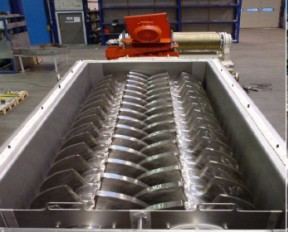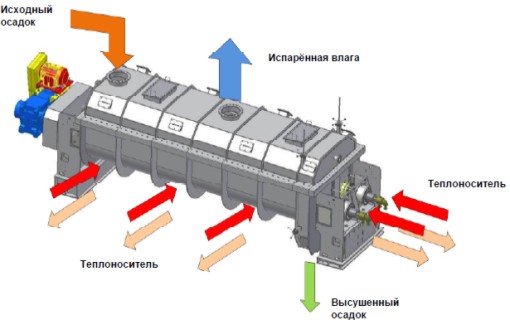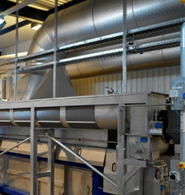Paddle dryer
The main elements of the paddle dryer are a rigid heated housing with two hollow shafts rotating in the opposite direction with special wedge-shaped paddles. Hollow shafts with paddles have no transport function, but serve for mixing and more intensive heat exchange. Due to the slow rotation of the shafts, it significantly reduces the load on the power plants and the degree of wear of the dryer assemblies. Another distinguishing feature of paddle dryers is the achievement of a high coefficient of evaporation of moisture from the sediment with minimal energy costs. The paddle dryer allows reaching up to 10% of residual moisture without adding dry sludge. Long stay of the sediment in the dryer at high temperature of about 100 °C makes it possible to completely disinfect the sediment. A special problem in drying sludge is the appearance of an adhesive phase when the content of suspended solids reaches 45-60%. In paddle dryers, due to the wedge shape of the paddles, self-cleaning effect occurs, which prevents the product from sticking in the unit. This design allows processing different types of sediment in any way depending on the appearance of the adhesive phase. The process of conductive drying is absolutely safe, due to the fact that the evaporation consists exclusively of steam and non-condensable gases. The risk of explosion is reduced to zero.
Advantages of the paddle mixer
- elimination of the adhesive phase without admixing;
- uniform product processing;
- energy efficiency;
- high flexibility in processing various types of sediments;
- minimum volume of evaporation;
- low speed/minimal wear of the paddles;
- compact design.









